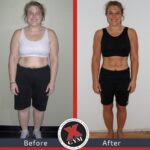Collagen has become a buzzword in cosmetics, often hailed as the key to youthful skin. You’ve likely seen it in anti-aging creams, promising to combat wrinkles and sagging. But what exactly is collagen, and does it live up to the hype? Let’s explore its science, its role in your body, and how it can—or can’t—support your health and fitness.
Collagen is a structural protein, accounting for about 30% of the protein in your body. It’s built from three chains of amino acids twisted into a triple helix, forming long, thin fibrils that are both strong and flexible. These fibrils are the building blocks of your skin, bones, cartilage, tendons, blood vessels, and connective tissues, providing elasticity and durability. Beyond structure, collagen protects organs like your kidneys, supports cell growth in your skin’s dermis (the middle layer), and aids in tissue repair.
In your skin, collagen keeps it plump and firm. The dermis contains a dense network of collagen—especially resistant to stretching—that’s constantly renewed by skin cells. However, this production slows with age, and enzymes that break down collagen increase, leading to wrinkles and sagging. This natural decline is why collagen has become a star in skincare and supplements.
Anti-aging creams and serums infuse collagen to replenish what your body no longer makes in abundance. The goal? Restore skin’s firmness and elasticity. Supplements take a similar approach, delivering collagen—often from bovine, porcine, or marine sources—that your body breaks into amino acids to build its own proteins, like collagen and keratin (for hair, nails, and skin’s outer layer). Alongside elastin and hyaluronic acid, collagen helps maintain skin moisture and volume.
A 2021 meta-analysis in the International Journal of Dermatology found that oral collagen supplements improve skin elasticity, firmness, and hydration, especially in older adults. The amino acids glycine, hydroxyproline, and proline—abundant in collagen—are key players here. This evidence has made collagen a staple in many skincare routines, backed by experts for its measurable benefits.
-
Source Matters: Bovine Collagen Mimics Human Collagen Best
Collagen comes from various animals—cows (bovine), pigs (porcine), horses (equine), chickens, and fish (marine). Bovine collagen, extracted from cow bones and hides, closely matches human collagen’s structure, rich in Type I (skin, bones) and Type III (muscles, vessels). Marine collagen, high in Type I, absorbs well due to smaller particles, while chicken collagen offers Type II for joints. Each type has a purpose, but bovine is often the go-to for skin health. The two best sources I have found are the Great Lakes brand and the Orgain brand. -
It’s Not Just for Aging: Everyone Benefits
Collagen production dips in your mid-20s, dropping 30% by age 40. A British study showed young men taking collagen with vitamin C maintained healthy levels after intense exercise, boosting strength and stamina. Another study found that middle-aged men improved their protein synthesis post-workout with collagen. It’s not just for wrinkles—it’s for anyone active or seeking protein support. -
Beyond Skin: A Whole-Body Boost
Collagen isn’t only cosmetic. Athletes benefit from its support for muscle recovery and performance (Sports Medicine, 2020). It strengthens nails (Journal of Cosmetic Dermatology) and promotes shiny hair (Journal of Functional Foods). A surprising perk? A Journal of Dietary Supplements study linked collagen to better mood, sleep, and restfulness—showing its reach into mental wellness. -
Form Doesn’t Change Effectiveness
Capsules, powders, gummies, or liquids—all deliver collagen equally if dosed right. Powders shine for flexibility; a 5-15g dose for muscles or bones fits easily into drinks, unlike capsules with limited capacity. Stomach acid doesn’t ruin collagen—it’s broken down into usable amino acids regardless of form. -
Rich in Amino Acids, But Not a Complete Protein—It Complements Protein Powders
Collagen offers 19 amino acids, including 8 of the 9 essentials (missing tryptophan). It’s a solid amino acid source but not a full protein like whey, so it doesn’t replace protein powders. Instead, it complements them beautifully. Protein powders (e.g., whey, pea) provide all essential amino acids for muscle repair and growth, while collagen adds glycine, proline, and hydroxyproline—key for connective tissue, joint health, and skin. Together, they create a powerhouse duo for active lifestyles or recovery. -
Hydrolyzed Collagen Maximizes Absorption and May Prevent Muscle Wasting Overnight
Raw collagen is a big molecule with low bioavailability. Hydrolyzed collagen (peptides) is pre-broken into smaller units, ready for your body to use. Studies show this form absorbs better, making it the top choice for supplements. Notably, taking it in the evening could help prevent muscle wasting during sleep, especially for those over 40. Overnight, your body enters a fasted state, breaking down muscle for energy. Collagen’s amino acids—particularly glycine—can fuel protein synthesis and reduce this catabolism. A 2019 study in Nutrients found collagen taken before bed enhanced muscle recovery and protein balance in older adults, suggesting it’s a smart nighttime habit as you age past 40.
Does Collagen Live Up to the Hype?
Collagen isn’t a cure-all, but it’s more than a trend. It supports skin repair, elasticity, and hydration, with benefits extending to joints, hair, nails, mood, and even muscle preservation during sleep. Food sources like bone broth provide it naturally, while supplements—especially hydrolyzed—offer a convenient boost. Doses range from 2.5g for skin to 15g for broader effects, and evening doses may protect against muscle loss as you age. Pair it with protein powders for a balanced approach—collagen won’t replace them, but it enhances their impact on your body’s structural and functional needs.
In short, collagen is a vital protein your body relies on, and supplementing it can enhance health across ages and lifestyles. It’s not the fountain of youth, but it’s a scientifically grounded tool for wellness when used wisely—especially with a nighttime dose for those over 40.
P.S. there are two types of collagen, but the most common that you will find, and discussed in this post is Type I. Type II collagen differs significantly in structure, location, and function, with Type II being uniquely tailored for cartilage and joint health. While Type I forms strong, rope-like fibrils that provide tensile strength to skin, bones, and tendons—making up 90% of the body’s collagen—Type II consists of shorter, more flexible fibrils that create a cushiony mesh, primarily found in hyaline cartilage (joints, nose, trachea), intervertebral discs, and the eye’s vitreous humor. Sourced from chicken or bovine cartilage, Type II excels at absorbing pressure and maintaining joint flexibility, supporting cartilage repair and reducing arthritis pain, as shown in a 2016 Nutrition Journal study. Unlike Type I’s broad structural role, Type II’s specialized function in cushioning and its potential to ease inflammation via oral tolerance (per a 2017 Journal of Arthritis study) make it a go-to for mobility-focused supplements, especially beneficial as joint wear increases with age. If you would like a great recipe to get both types of collagen, click here.
References
[1] https://www.medicalnewstoday.com
[2] https://www.sciencedirect.com
[3] https://my.clevelandclinic.org
[6] https://www.health.harvard.edu
[7] https://my.clevelandclinic.org
[8] https://onlinelibrary.wiley.com
[9] https://scijournals.onlinelibrary.wiley.com
[10] https://ndlabs.com
[11] https://www.researchgate.net
[12] https://www.mdpi.com
[13] https://www.mdpi.com
[14] https://jlse.springeropen.com
[15] https://ancientandbrave.ph
[16] https://www.bbc.com
[17] https://journals.physiology.org
[18] https://www.healthline.com
[19] https://link.springer.com
[20] https://onlinelibrary.wiley.com
[21] https://www.sciencedirect.com
[22] https://www.tandfonline.com









